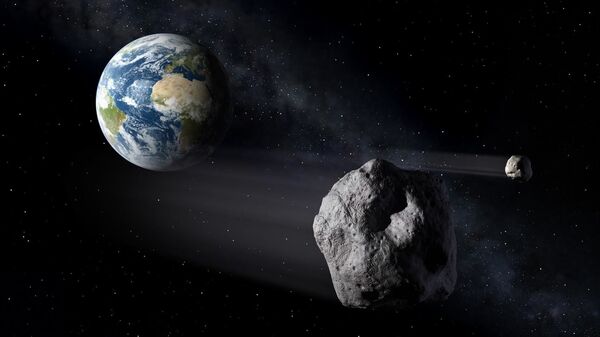Scientists from the Massachusetts Institute of Technology (MIT) have devised a “decision map” to help determine the best course of action if an asteroid threatens to collide with planet Earth.
The researchers have described their method, laid out in the study “Optimization and decision-making framework for multi-staged asteroid deflection campaigns under epistemic uncertainties” as a "preventative strike" as opposed to a "last-minute deflection." The research has been published in the journal Acta Astronautica.
The MIT team claims a kinetic impactor, a projectile that deflects an object via impact, is the only currently available method that might enjoy any chance of success.
MIT's decision map calculates asteroid mass, momentum, trajectory and the time before an imminent collision, eventually determining the best method of dealing with an incoming asteroid. The authors of the study emphasise the importance of considering the proximity to what is known as a “gravitational keyhole” - the narrow region that once passed by an asteroid, places it on a collision course with Earth.
"A keyhole is like a door—once it's open, the asteroid will impact Earth soon after, with high probability," claims lead author Sung Wook Paek.
According to the scientists, in most deflection methods the minor changes in course would result in velocity alterations of a few millimetres or centimetres per second, so early detection is key to ensure success.
Together with his colleagues, the scientist applied their decision map to two near-Earth asteroids: Bennu and Apophis.

The choice fell on these two since the locations of their gravitational keyholes in respect to Earth are known to science.
Three alternative missions were tested via simulations. One involved a kinetic impactor interrupting the path of an approaching NEO, to alter its track.
Another involved dispatching a "scout" before the projectile, to measure the asteroid and advise scientists on what type of projectile to resort to.
Finally, a third presupposed dispatching two “scouts”: to advise and to prod the asteroid slightly off course before the projectile is set off.
According to the team’s calculations, it would be possible to apply the third mission to Apophis if scientists had five years of early warning before it passes the “gravitational keyhole”.
One scout and a projectile could be sent if scientists had between two and five years of warning.
If there was even less time, scientists would have to rely on the first mission involving one projectile and no scouts.
"People have mostly considered strategies of last-minute deflection, when the asteroid has already passed through a keyhole and is heading toward a collision with Earth… I'm interested in preventing keyhole passage well before Earth impact. It's like a preemptive strike, with less mess," says Paek.
In future studies the team hope to continue their experiment, resorting to different types of projectiles to see, for example, how multiple smaller projectiles compare to one large one.





